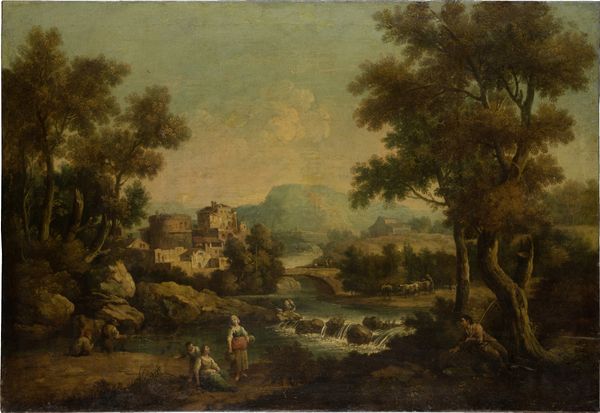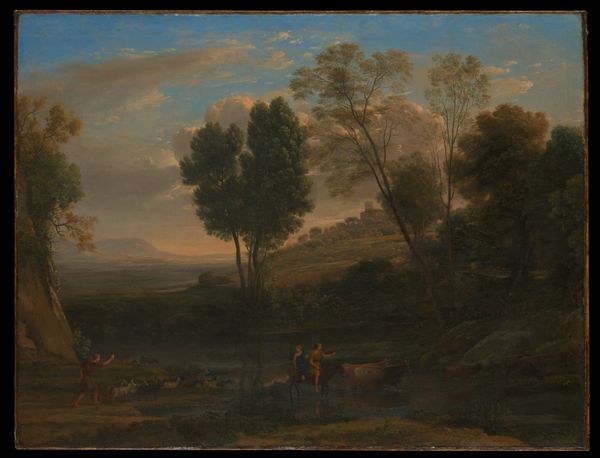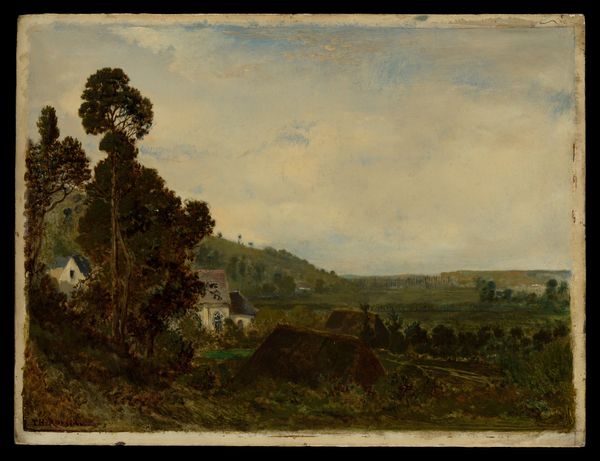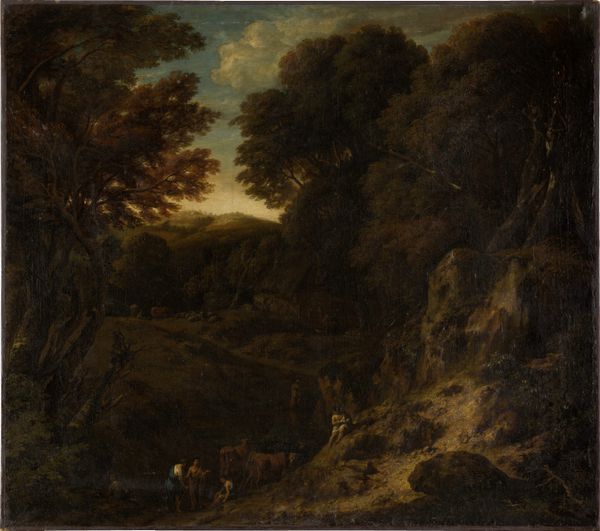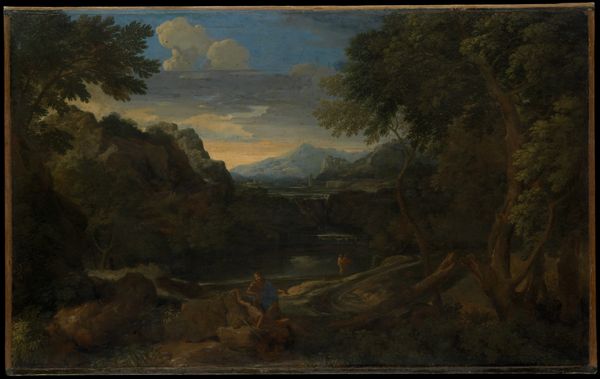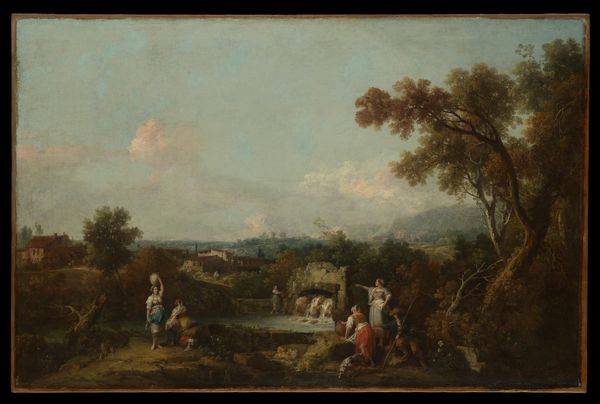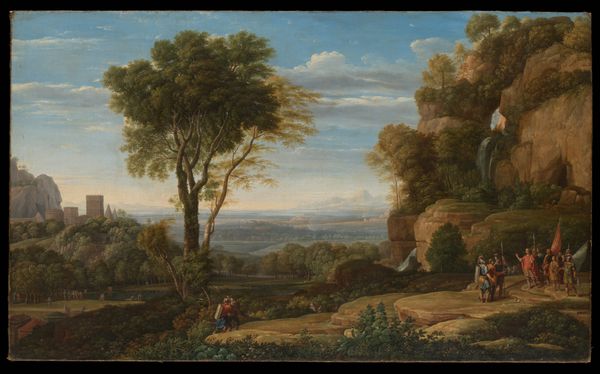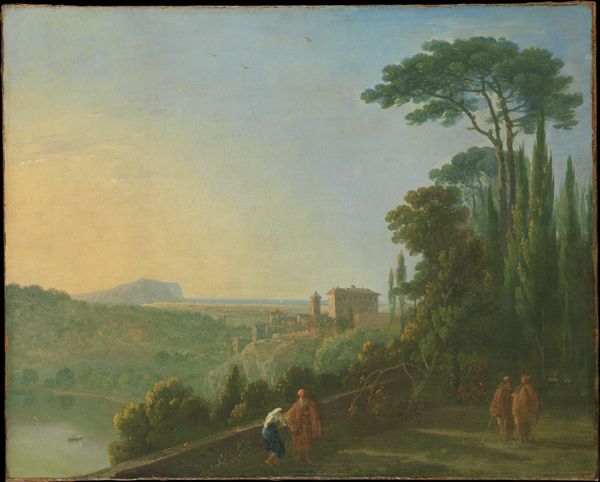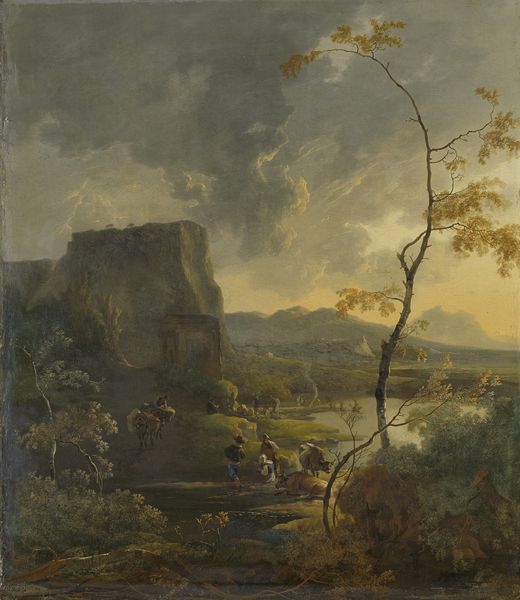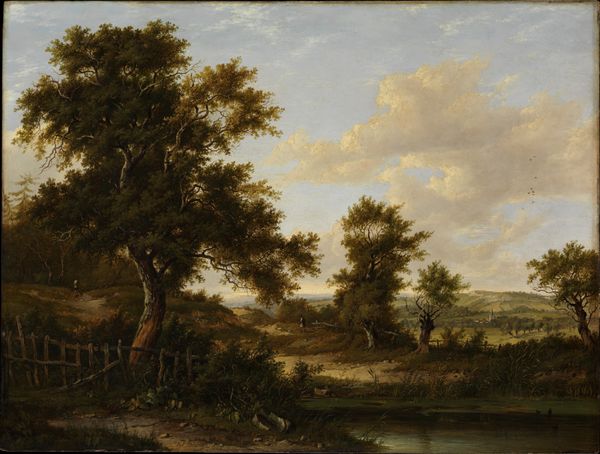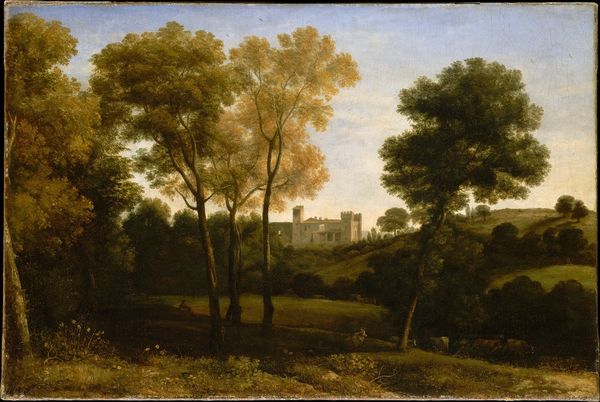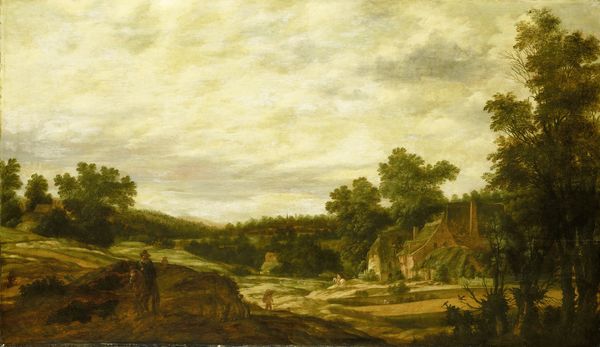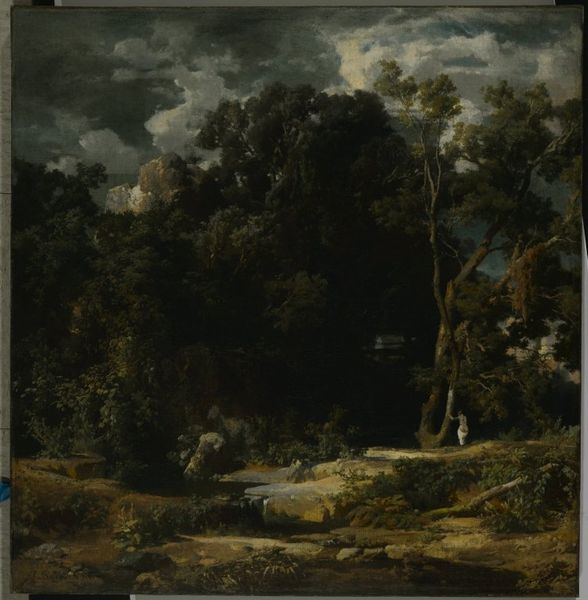
Dimensions: 12 1/2 x 18 1/8 in. (31.8 x 46 cm)
Copyright: Public Domain
Editor: Arnold Böcklin’s *Roman Landscape*, painted around 1850, uses oil on canvas to depict a tranquil scene. It feels almost dreamlike, this imagined past, doesn't it? What draws your eye in this piece? Curator: The romantic impulse of the mid-19th century often saw artists like Böcklin idealizing landscapes and historical scenes. This painting speaks to the public's fascination with a glorified Roman past, presenting an image carefully constructed for consumption. Do you notice how the people are rendered, almost like set pieces within a stage? Editor: Yes, they seem posed rather than naturally integrated. So, you're saying the painting's less about accurately depicting Rome and more about selling a particular idea of it? Curator: Exactly. It plays into a desire for a connection to a grand historical narrative. Museums and galleries reinforced this desire, creating spaces where viewers could engage with these romanticized versions of the past, shaping cultural perceptions. Böcklin gives viewers a landscape loaded with associations to a past grandeur, inviting them to inhabit it imaginatively. Do you think it invites critique as well? Editor: Perhaps the lack of realism, or its nostalgic leanings, could be viewed critically today? It seems…detached. Curator: Precisely. Considering its creation and reception reveals much about the politics of imagery and the public's role in embracing specific cultural narratives. These paintings helped establish what was considered ‘beautiful’ or ‘historical.’ Editor: I see it differently now. What once seemed like a pleasant scene carries more complex historical weight. Curator: Indeed, thinking about art's connection to social forces gives us a better, and sometimes unsettling, understanding of both its creation and our response to it.
Comments
No comments
Be the first to comment and join the conversation on the ultimate creative platform.
